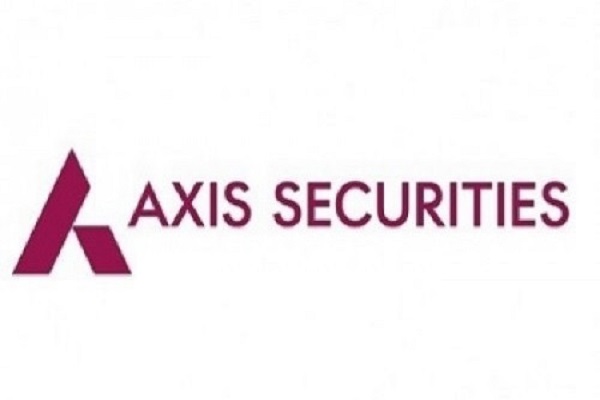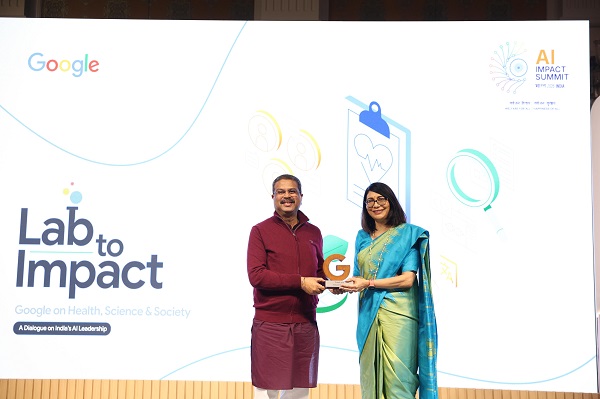Insurance : Anxiety and optimism by Kotak Institutional Equities

Anxiety and optimism
2QFY26 performance of life insurance companies reflected mixed growth trends with directional margin expansion. While loss of ITC on GST tempered performance remains a headwind, recent growth in sum assured is encouraging, providing visibility of mitigating ITC losses. Non-life companies reported improvement in claims ratios in health, with a bullish outlook on motor growth.
Margins getting better
Life insurance companies under coverage reported 1-25% VNB growth backed by 3% decline to 15% APE growth, with most (excluding HDFC Life) expanding margins by 104-189 bps yoy, reflecting higher operating leverage and product mix change; margin expansion would have been much higher but for the impact of ITC loss due to the GST cut of 50-90 bps.
GST and beyond
The impact on insurance companies of the GST exemption and measures to mitigate ITC losses was the key point of discussion in the earnings calls of life insurance companies. Exhibits 7-8 show rough estimates of VNB/EV impact on various companies, based on our rough estimates; the companies have called out an impact of 175-350 bps on VNB and up to 0.5-1% on EV on account of ITC loss on GST exemption. PAT growth for private life companies under coverage was up (16)% to 32% as compared to (51)% to 34% yoy growth reported in 1QFY26 (see Exhibit 6); part of the lower growth in 2Q reflects the impact of higher reserving due to ITC loss.
All companies are confident of neutralizing the losses and coming back to guided margin levels over the next few quarters through a combination of corrective measures, including sharing losses with distributors and enhancement of product mix; as of now, tariff hikes are not on the cards. Axis Max Life and SBI Life (290 bps and 200 bps yoy margin expansion before impact of GST cut) provided the most visibility of margin normalization; we have nevertheless cut margin estimates for many players under coverage. Exhibit 12 shows that sum assured (SA) growth was impressive at 35% for the private sector in October and 59% for the top four players, i.e., >4X APE growth for the month; while we don’t expect the trend to remain as strong, it appears that SA growth will remain elevated, providing significant comfort on the ability of companies to normalize margins..
Remain assertive on life companies
We remain bullish on life companies. The recent SA trend is really encouraging. We do not expect the same to be sustained, we believe that SA growth will remain significantly ahead of APE growth, thus improving margins and reducing the protection gap. ITC loss may still have a residual margin impact for insurance companies as well as distributors. SBI Life, with improving traction and visibility to sustain margins, remains our favored pick in the sector.
APE growth muted in 2Q, mixed trends between players
APE growth in 2Q was muted at 9% for private sector in 2QFY25 on a higher base that reflected strong sales before surrender value guidance came into force (Oct 2024). Trends between varied across months and between players reflecting changing strategy. Most business for the month of September was concentrated in last ten days i.e. after GST exemption.
HDFC Life had a strong July likely driven by ULIPs, while SBI Life picked up later in the quarter. While Axis Max has been strong, ICICI Prudential Life and Bajaj Life has been low throughout the period. Aditya Birla SL continues to remain strong, Tata AIA has again started to ramp up. to ramp up.
Growth in SA, reflecting growth in term business, riders or protection bundled with savings, has reported strong (19%) growth, higher than 9% growth in APE. Tailwinds post GST seem much stronger but need to sustain.
Varied response to GST exemption
The impact of ITC loss resulting from the GST exemption varies from ~ 175 -350 bps across players. The reaction also varied across major players, as LIC and SBI Life prioritized growth and product mix shift to offset the drag of ITC loss. HDFC Life, ICICI Prudential Life and Axis Max Life are actively engaged in renegotiations with distributors and vendors to share the cost impact. Companies also noted that the benefit of the GST exemption, fully passed on to customers, is expected to stimulate higher overall demand and improve persistency over time.
SBI Life and LIC gain share
in market share. Sum assured growth was strong at 35% for private players in October 2025. SA growth momentum has doubled for the top four private players likely indicating pickup in protection growth post GST cut.
Player-wise 2Q results summary:
Axis Max Life reported strong VNB growth. Axis Max Life reported 23% growth in VNB during 2QFY26 (our estimate of 13% growth) on the back of 15% growth in APE and expansion in VNB margin to 25.5%, up 189 bps. Excluding the impact of GST, margins would have been about 26.5% in 2Q, i.e., up 289 bps yoy, reflecting the change in product mix, a favorable yield movement and some operating leverage. The share of ULIPs declined by 934 bps to 34.7% of APE, while non-par increased 433 bps to 34.7% of APE. Protection ramped up 267 bps to 12.7%, while group protection declined a bit. Operating RoEV was reported at 16.3%, with a 7% increase in EV during the period; the impact of ITC loss on account of GST exemption for life policies was 1% of EV.
Modrate VNB growth for HDFC Life. HDFC Life reported a moderate 8.6% yoy APE growth and 20 bps yoy VNB margin compression, leading to 7.6% yoy VNB growth. Shift in product mix (up 90 bps yoy in 2Q and 300 bps for full year) offset the impact of GST norms (down 50 bps), surrender regulations (down 30 bps) and fixed cost absorption (down 60 bps), leading to a 50 bps yoy VNB margin compression on a like-for-like basis. ULIP, par and protection were up 41-104%, driving overall APE growth. Elevated competition in guaranteed return products has led to a 53% yoy decline in non-par APE in 2QFY26. Agency and direct reported strong growth of 25-35% yoy, while bancassurance growth was muted at 7% yoy.
Muted VNB growth of ICICI Prudential. ICICI Prudential Life reported 1% VNB growth on the back of 104 bps VNB margin expansion and 3% APE decline in 2QFY26. The company has improved the product mix, with an increase in the share of non-par business (about 50% of non-linked business) to 11% of overall APE versus 7% last year. The growth in sum assured was strong at 17.2%. A low base for 4Q (3% decline in 4QFY25 versus 27% growth in 9MFY25) and tailwinds from GST exemption in ULIPs (48% of APE in 1HFY26) and term will be the likely drivers. Share in group term business will increase as microfinance again starts to scale up.
LIC reported moderate VNB growth. VNB was up 7.7%, reflecting yoy flat overall APE and 147 bps yoy VNB margins expansion to 19.3% in 2QFY26 (17.9% in 2QFY25); VNB margin was up 136 bps yoy to 17.6% in 1HFY26. The company highlighted that product-level margins expanded with higher tickets and sum assured; the share of non-par was down 30 bps yoy in 2QFY26; ULIP grew 112% with a 720-bps increase in share yoy to 13.5%. VNB walk suggested negative operating changes of 90 bps in 1HFY26, which included the GST impact. The change in interest rates and risk-free rate (RFR) assumption led to a 110-bps negative impact.
Growth and margins pick up for SBI Life. SBI Life reported 28% VNB margin in 2QFY26, up 120 bps yoy, leading to 15% VNB growth; overall APE growth was modest at 10%. Reported margins reflect the impact of ITC loss; margins before this adjustment would have been ~29% versus 26.8% in 2QFY25. Two key drivers— (1) increase in non-par business by 40% yoy to 23% of APE and (2) 25% yoy growth in individual protection and credit protect; these two segments now account for 5.3% of APE (4.8% in 2QFY25). The growth in sum assured was high at 66% in 2QFY26 (63% in 1HFY26), reflecting an increase in riders sold on ULIPs.
Product mix change – higher traditional business
Exhibit 11 shows that share of ULIPs declined 280-900 bps yoy for large listed players except for HDFC Life. This was replaced by growth in non-par, protection and par products for most players
Share of non-par has picked up for most players. While HDFC Life reported decline in share of non-par to 23% (43% in 2QFY25), rest of the private players reported 200-500 bps yoy rise in share of non-par to 18-35%. Volatility in equity markets and lower deposit rates have likely led to pick up in demand for non-par products.
Retail protection growth was strong. Retail protection has grown across the board with most players reporting 24-46% yoy APE growth in 2QFY26. In addition, sum assured growth was also elevated at 25-45% driven by both protection growth and higher rider attachment.
Credit life products saw mixed performance in 2QFY26; while HDFC Life and SBI Life reported strong growth, ICICI Prudential Life reported a yoy decline due to weakness in micro finance.
ULIP growth has moderated. ULIP APE declines 2-14% for most players in 2QFY26 likely due to volatility in equity markets. HDFC Life reported strong growth in ULIPs (up 42% yoy) on a low base. Most players have consciously slowed down growth in ULIP, especially through low persistency channels to protect margins. SBI Life operates at the higher end with 58% share of ULIPs in 2QFY26, while HDFC Life (40%) and Axis Max life (35%) are at the lower end. ICICI Prudential Life and Bajaj Life have 49% and 44% share of ULIPs in overall APE, respectively.
Bancassurance growth was muted in 2QFY26; mixed trends in agency
Muted growth in banca channel. Bancassurance premium growth was muted at 9-7% for major banks in 2QFY26. ICICI Bank reported strong 20% growth on a low base. While HDFC Life’s bancassurance product mix remained skewed towards ULIPs, SBI Life and Axis Max Life reported a sharp shift toward non-par and protection. LIC continued to expand its bancassurance channels and saw 67% yoy premium growth here.
Mixed trends in agency. While Axis Max Life and HDFC Life reported strong 25-26% APE growth in 2QFY26, Bajaj Life and ICICI Prudential Life reported sharp 15-23% decline in APE. SBI Life reported muted 4% APE growth in the channel. Trends in agency force were also mixed with ICICI Prudential life and Axis Max Life reporting strong 17-21% yoy growth while rest of the pack reported muted 0-2% growth in agency force.
Weak persistency trends
Persistency trends in 2QFY26 showed mixed results, influenced by ticket size, product mix, and high base effect of policies sold during the sunset period. LIC experienced a drop in policy-wise persistency due to a large volume of low-ticket-size policies in the base. LIC has revised its product design and expects the persistency to improve in the newer cohorts. Axis Max Life recorded its highest 13-month persistency among peers. ICICI Prudential noted that current persistency levels were in line with FY2023 and that prior periods had unusually high persistency due to the non-linked business written during the tax exemption window.
Cost ratios have shown mixed trend
In 2QFY26, cost ratios displayed varied trends across the industry. LIC and IPRU reported a decline in their cost/APE ratios, likely driven by improved operational efficiencies and lower new business strain. Conversely, HDFC Life's cost-to-APE ratio was elevated due to a sharp rise in single premium commissions. SBI Life also noted higher expense ratios due to investments in footprint (new branches and employees).
Medium-term RoEV of 14-18% for private players
Exhibit 20 shows that private Life insurance companies reported operating RoEV of 13% to 20% in FY2025. VNB contributed 42-56% to EVOP while unwinding contributed 41-63%. Private players will likely deliver 14-18% operating RoEV over FY2026-28E. We expect operating variance to be moderately positive over the medium term driven largely by improvement in persistency. Unwinding rate will largely be stable in the range of 8.0-8.2% for all players. APE growth will likely remain moderate at 12-17% over FY2026-28E. We believe that ITC loss-sharing discussions with distributors for most of the companies create uncertainty over margins and near-term trajectory (impact of ITC loss may not be uniform across products).
NON-LIFE: GROWTH PICKS UP, CAPITAL GAINS SUPPORT PROFITABILITY
GWP growth in the non-life industry was moderate at 10% in 2QFY26, driven by commercial lines. Growth in retail health was strong across players, both SAHIs and general insurers reported mid-teen GWP growth. Bajaj Allianz General stepped up growing at 28% in the motor TP segment. ICICI Lombard was more measured leading to 2% yoy GWP growth. Claims ratio has moderated in health business across players, Star Health reported 129 bps yoy reduction in claims ratio.
Bajaj General: Most segments fare well, expenses a tad higher
Bajaj General reported strong 14% GWP growth in 2QFY26, excluding ex- crop, govt health and 1/n, driven by robust performance in commercial lines (up 19%) and motor third-party (up 28%). While the reported retail health growth was affected by the '1/n' rule (1% yoy), it grew 11% on a like-for-like basis. Although the company is slowing down in group health and tender businesses due to elevated competition. The reported combined ratio rose to 102.3% due to higher expenses, despite a moderation in the claims ratio, though management expects growth and RoE to pick up in later years as expense ratios normalize.
ICICI Lombard is well placed in most business lines
ICICI Lombard reported an 18% increase in PAT to Rs8.2 bn in 2QFY26, in line with estimates, despite underwriting losses from elevated CAT events like floods. GWP growth was muted overall at 1.6% due to flat motor premiums, though commercial lines and health registered moderate growth (6-8%). The claims ratio improved in the health segment (especially retail), moderating to 77% from 84% in 2QFY25. The company expects future GWP growth to be driven by a pickup in motor sales (leveraging a strong OEM dealer network) and sustained momentum in commercial and retail health lines.
Star Health reported sharp decline in IGAAP earnings; claims ratio improves
Star Health's 2QFY26 PAT was down 51% yoy primarily due to higher commission rates from long-term policies and reduced investment income. IFRS PAT at Rs796 mn in 2QFY26 was down 36% yoy due to a sharp 54% decline in investment income. The IFRS expense ratio was 27.9% versus 27.8 % in 1QFY26 and 29.8% in 2QFY25. The best part of the results was the reduction in the claims ratio, which moderated 129 bps yoy to 71.5%, as the base period had the full impact of infectious diseases; this got a bit front-ended in 1QFY26; the trend of improvement in claims ratio in 2Q is similar to peers (that have reported so far). A combination of tariff hikes, an increase in new business and lower group business is the likely driver. Star Health had reported a rise in the claims ratio to 70.3% in FY2025 from 66.5% in FY2024 and 65% in FY2023. We finally see some signs of stabilization, with the benefit of the full impact of tariff hikes and the tightening process getting reflected from next year.
Niva Bupa reported strong operating trends in 2QFY26
Niva Bupa reported IFRS PAT of Rs616 mn in 2QFY26, up 157% yoy. Retail GWP growth was strong at 28% (pre-1/n basis). The IFRS claims ratio was likely flat yoy at ~65% in 2QFY26. Operating leverage kicked in, leading to a 120-bps yoy moderation in the IFRS expense ratio to 38%. ITC disallowance in the last 10 days of the quarter led to a drag of Rs50-80 mn (10 bps on expense ratio). In 1QFY26, higher provisions for outstanding claims led to a 250-bps higher claims ratio, which should have reversed in 2QFY26. The retail claims ratio was flat at 68%. The elevated group claims ratio (up 500 bps) was likely due to the shift in mix toward employer-employee contracts, leading to a stable overall claims ratio.
Above views are of the author and not of the website kindly read disclaimer
























